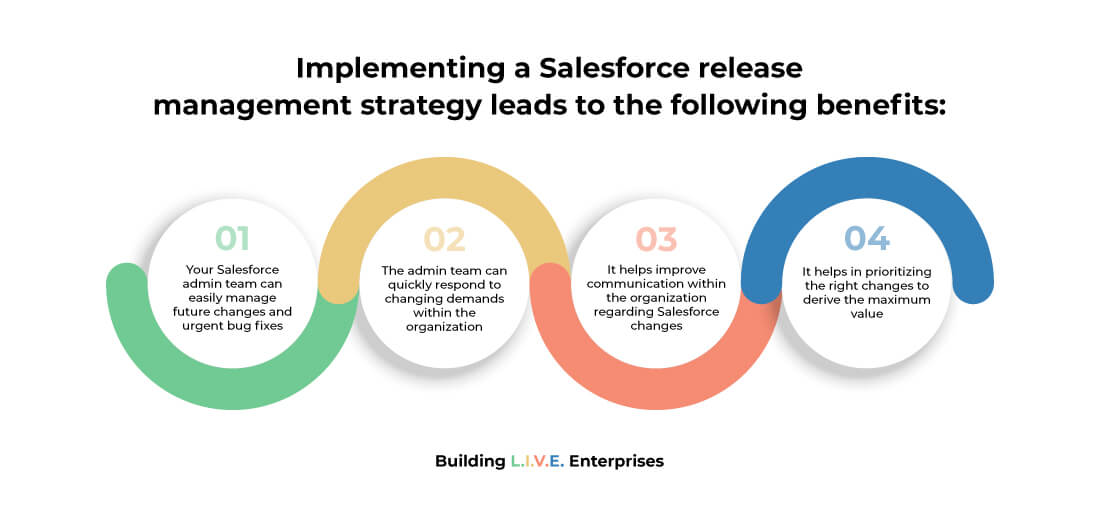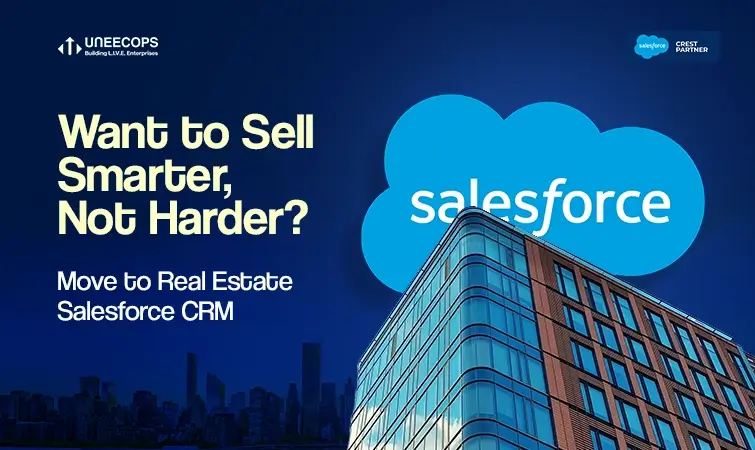Salesforce release management is an ongoing procedure with certain stages that must be followed to ensure a successful release every time. To ensure a stable deployment of new features, each step must be completed before moving on to the next. Processes for Salesforce Release Management should not be set up in isolation. They are intricately linked to the organization’s business strategy, objectives, change management, governance, and other factors. The goal of release management is to create optimal business value and resource utilization by having a consistent set of repeatable, dependable, and resource-independent processes. Given that most businesses are focused on completing shorter, high-yield business initiatives, optimizing the application delivery value chain is critical to ensuring that the business value is delivered without bottlenecks. That is why a Salesforce Release Manager is crucial in every organization working with the Salesforce platform to ensure a smooth release process and to prevent any misalignment in the same.
Setting up Salesforce Sandbox
A Salesforce sandbox is a place where you can test and build without risking your main, or production, Salesforce org’s valuable data being changed or lost. Sandboxes are a great way to keep your data clean while you’re teaching, testing, or developing. It’s usually a good idea to first test these features in a sandbox, regardless of the size of your business or the feature you’re changing or introducing. Setting up a Salesforce Sandbox requires you to choose the appropriate option from the given list according to your requirements. Mainly, Salesforce offers four types of Sandboxes to be created based on the different needs of the organization. And once you configure all the necessary points, your Sandbox will be created in any span of time, ranging from minutes to days depending upon the size of the data and your organization.
Importance of a Release Management Strategy
The lack of a release management strategy that dictates how and when changes to the system are provided is one of the main factors that may derail a successful Salesforce operation. Because without a release management plan, what began as a well-organized program with stakeholder buy-in and end-user knowledge can swiftly devolve into chaos. A Salesforce release management approach helps keep a successful Salesforce program on pace and generate ongoing benefits, allowing you to double down on the gains you’ve already seen. It accomplishes this by establishing a clear procedure for receiving, reviewing, and prioritizing requests for updates, as well as delivering those changes in an orderly manner.

Keeping updated with Salesforce’s yearly releases
Salesforce release managers are the company’s ambassadors, leaders, and experts on all things related to Salesforce. And remaining updated on technologies that can affect your organization, whether they’re new tools you can use or upgrades to features you already use, is an important aspect of being the Salesforce expert for your firm. With three product releases every year, it’s critical to have a game plan in place for upcoming releases. So, to keep your Salesforce environment updated, you need to focus on the following points:
- Be aware of when the updates are coming
To be prepared, you must first understand what is coming and when it will arrive. All key dates for your Salesforce environment are listed on the Salesforce Trust calendar, including release schedules for your Salesforce instance.
- Test the new features
When working with new updates, try to look into the new environment features and get to know how new things work.
Updating Salesforce Environment Best Practices
Salesforce’s ability to allow fewer technical users to construct apps and customizations without writing a single line of code is at the heart of what makes it so effective. This one-of-a-kind strength, however, comes at a price. Because of its proclivity for introducing numerous competing sources of truth, as well as the cost of reversing click settings into code, it makes source control and release management extremely difficult. Companies should follow several guiding principles while implementing Salesforce source control and release management, which may not be required in other software development stacks. So, below are some best practices and methods that companies can practice to keep their Salesforce environment updated and clean:
- Using pull requests & feature branching
Your developers/admins should each work on their sandbox and commit modifications to a feature branch that represents a business change (Jira ticket, business request, etc.). Before being deployed in targeted environments, this feature branch will be integrated into integration branches.
- Tracking code & configurations in Git and sourcing from it
Setting up a continuous integration task that deploys from your Git repository to your production instance is the ideal way to do this. This forces your entire team to follow the release management procedure and always commit changes to Git before pushing them to production.
- Releasing smaller changes frequently
This allows your team to quickly sync their sandboxes by simply delivering the master branch to their sandboxes without encountering any deployment difficulties.
- Setting automated continuous integration
Set up automatic continuous integration jobs to validate commits as soon as they are merged. Build failures clog your release management pipeline, so create a culture in which everyone takes build failures seriously and addresses them promptly.
- Segregation of duty & access control
Your Salesforce release management process should be constructed so that each job is solely concerned with his or her element of the process. Depending on the size and complexity of your Salesforce system, your optimum build pipeline, branching strategy, and release management procedure will range slightly. However, if you follow the best practices outlined above, you will be one step ahead of the game in bringing your team toward a more simplified, modern, and automated Salesforce release management process.
Conclusion
A successful implementation is a vital first step in your Salesforce journey, but it is only the beginning. To reap the long-term benefits of Salesforce, institutional governance is required, as is a release management approach. When combined with a great Salesforce release manager, these tactics will yield even greater returns on your investment and help keep both end-users and stakeholders involved in the program.







